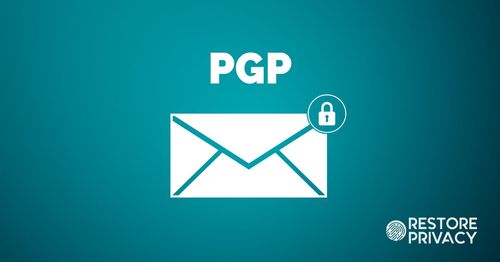Introduction: Understanding the Significance of PGP Email Verification
In an era where email communication is a fundamental part of our personal and professional lives, ensuring the security and authenticity of email messages is paramount. PGP, short for Pretty Good Privacy, offers a robust solution for email verification and encryption.
This comprehensive guide is designed to equip you with the knowledge and skills needed to harness the power of PGP email verification. Whether you're an individual looking to enhance your email security or an organization seeking to safeguard sensitive information, PGP can be a game-changer.
Part 1: What Is PGP Email Verification?
PGP email verification is a process that involves digitally signing an email message to prove its authenticity and integrity. It's a cryptographic technique that uses a combination of public and private keys to verify that an email message hasn't been tampered with during transmission and that it indeed originated from the claimed sender.
How PGP Works for Email Verification
Key Pair Generation: PGP email verification begins with the generation of a key pair—a public key and a private key. The public key is shared openly, while the private key remains confidential.
Digital Signing: When a sender wishes to send a secure and verified email, they use their private key to create a digital signature of the email message. This signature is unique to the message and the sender.
Public Key Retrieval: The sender's public key is made available to the recipient, typically through a public key server or a key exchange.
Verification: Upon receiving the email, the recipient's email client or software uses the sender's public key to verify the digital signature. If the signature is valid and matches the content of the email, the message is considered authentic.
Trust Model: PGP operates on a trust model, where users trust the public keys of others. Trust is established through methods like web of trust or key signing parties.
Part 2: Verifying a Signed Email with GPG
The GNU Privacy Guard (GPG) is a popular implementation of the OpenPGP standard, making it a go-to tool for PGP email verification. To verify a signed email with GPG, follow these steps:
Step 1: Import the Sender's Public Key
Before you can verify a signed email, you need to have the sender's public key. You can import it using the following command:
gpg --import sender_public_key.asc
Step 2: Verify the Email
Once you have the public key, use the --verify option to verify the email's signature:
gpg --verify signed_email.asc
GPG will check the signature against the sender's public key. If the email is valid, you'll receive a confirmation message.
Troubleshooting: Common GPG Verification Issues
Key Not Found: If GPG can't find the sender's public key, ensure you've imported it correctly.
Expired Key: Check if the sender's key has expired. You may need to request an updated key.
Incorrect Signature: If the email signature doesn't match the sender's key, it may indicate tampering or a different sender.
Part 3: Enhancing Email Security with PGP
Beyond email verification, PGP offers several security enhancements:
End-to-End Encryption
PGP can encrypt email content, ensuring that only the intended recipient can decrypt and read the message. This provides privacy even if the email passes through untrusted servers.
Authentication
PGP email verification authenticates the sender, confirming that the email indeed comes from the claimed source. This protects against email spoofing and phishing attacks.
Digital Signatures
PGP signatures provide proof of message integrity. Even if an email is intercepted, any alterations will invalidate the signature.
Part
4: Addressing Key Trust and Management
Trust in PGP relies on the integrity of public keys. To establish trust, users must verify the authenticity of public keys. This can be done through web of trust models, where users vouch for each other's keys, or by attending key signing parties.
Key management is also crucial. Users must safeguard their private keys and regularly update their public keys.
Conclusion: Harnessing the Power of PGP Email Verification
In an age of digital communication, ensuring the authenticity and security of email messages is paramount. PGP email verification, powered by tools like GPG, empowers individuals and organizations to verify the integrity of their emails and authenticate senders.
By following this comprehensive guide, you've taken the first steps toward harnessing the power of PGP for email verification and enhancing your email security. Embrace the world of PGP, and communicate with confidence knowing that your emails are not only private but also trusted and verified.
Frequently Asked Questions
Q1: What is the difference between PGP and GPG?
PGP (Pretty Good Privacy) is a data encryption and decryption program used for email verification and security. GPG (GNU Privacy Guard) is an open-source implementation of the PGP standard. While PGP refers to both the software and the standard, GPG specifically refers to the software.
Q2: Can I use PGP email verification with any email client?
PGP email verification can be used with various email clients, but you'll need plugins or integrated support for PGP. Popular email clients like Thunderbird and Microsoft Outlook offer PGP integration.
Q3: Is PGP email verification suitable for personal email?
Yes, PGP email verification is suitable for personal email. It provides an extra layer of security and ensures that your emails are tamper-proof and authenticated.
Q4: Can I revoke my PGP key if it's compromised?
Yes, you can revoke your PGP key if it's compromised or if you suspect unauthorized access. Revocation ensures that the key can no longer be used to sign emails.
Q5: Is PGP email verification vulnerable to key theft?
PGP email verification relies on the security of your private key. If your private key is stolen or compromised, it could be used to sign fraudulent emails. Therefore, safeguarding your private key is crucial.



